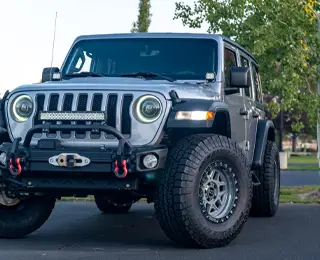How to Read Tire Wear Patterns
Your tire tread can say a lot about how and where you drive. As it wears down, that rubber will let you know if you need an alignment, whether or not there is the right amount of air in those tires, and when you might need a new set for safety and control. The professionals at Les Schwab are happy to check the tire tread depth anytime you stop by. They’ll also look for cupping, irregular wear, and other possible issues. Between those quick inspections, we have some tips on how to check tire tread at home.
Why Understanding Tire Wear Patterns is Important
Whether or not your vehicle is packed with the latest safety equipment and professionally installed brakes, your tires are what connect you to the road. If those tires are badly worn, they cannot do their job and those safety features will not work like they should. The tread on your tires can also affect fuel efficiency and range.
Catching tread issues early can save you money. Depending on the issue, something as simple as air pressure can help prolong the life of your tires and help grip the road. Left unchecked for too long, irregular wear could force you to buy new tires earlier than expected.
Common Tire Wear Patterns and Their Causes
Let’s take a look at some of the more common wear patterns of tires, what causes them, and possible fixes.
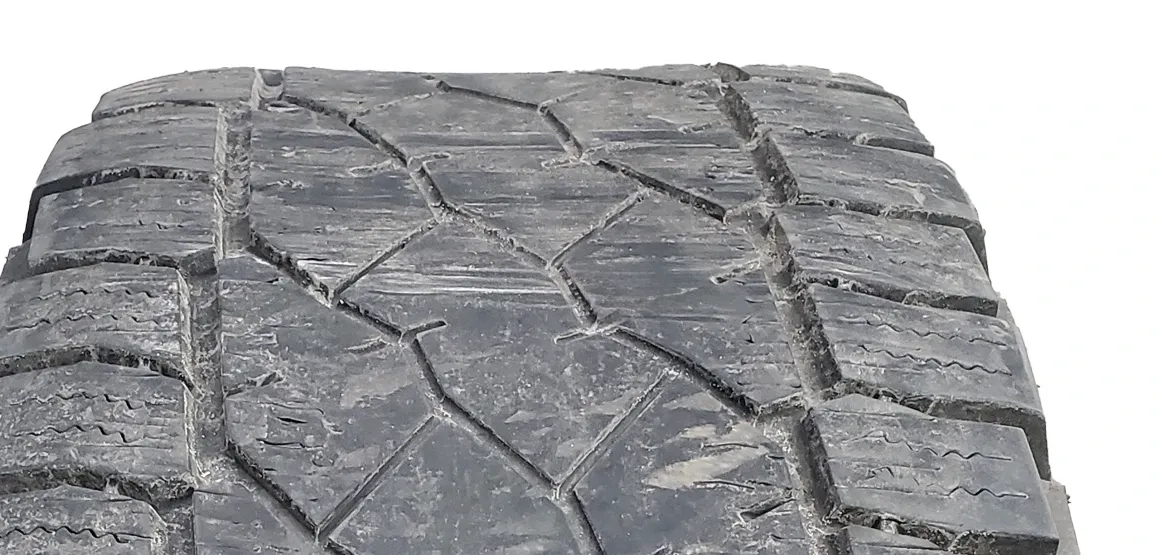
Center Wear
This is often caused when the tires are over-inflated. Did you add air pressure based on the PSI indicated on the side of the tire? That could cause issues. Instead, check your owner’s manual or the driver’s side door sticker for the proper front and rear air pressure for the tires on your car or truck.

Edge Wear
Are the edges of your tread wearing down faster than the center? Under-inflated tires could be the issue. You might also have your car or truck overloaded with too much weight. Tires will lose about 1 PSI (pounds per square inch) per month. Here’s how to add air to your tires. If your tires continually lose air, stop by Les Schwab for an air pressure check.
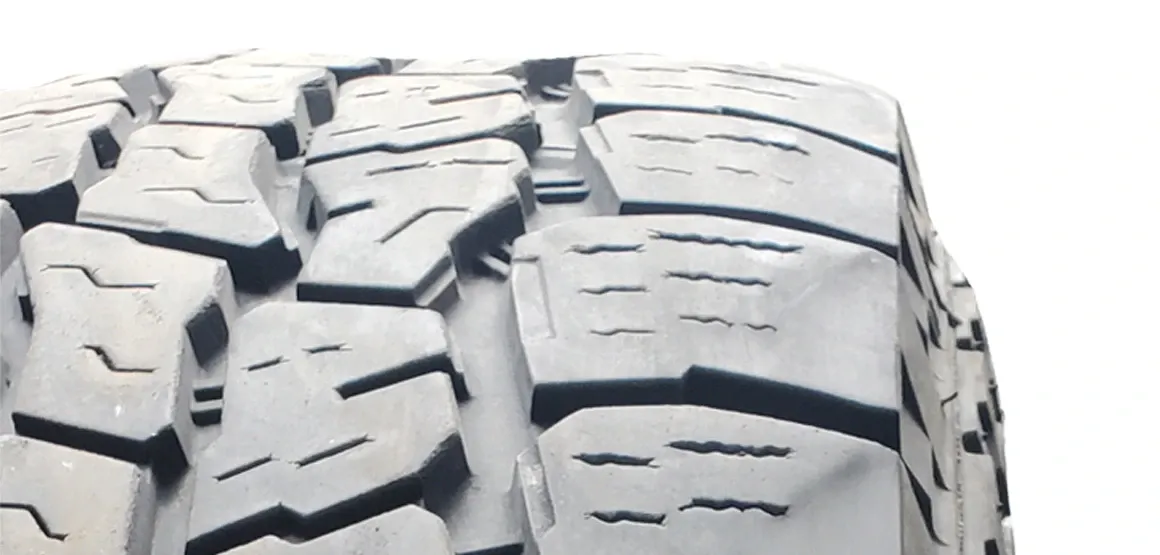
Cupping
Every car and truck is suspended by a combination of springs, shocks, and struts. As your shocks or struts wear down, or your suspension components become worn or bent, it can cause issues with your alignment, which can cause tread cupping. This cupping can get worse as those parts wear down. Properly maintained shocks and struts can help with bumps, debris, sudden stops, swerving, potholes, wind gusts, or sharp turns, as well as side-to-side, front-to-back, and up-and-down shifts of the car’s weight.
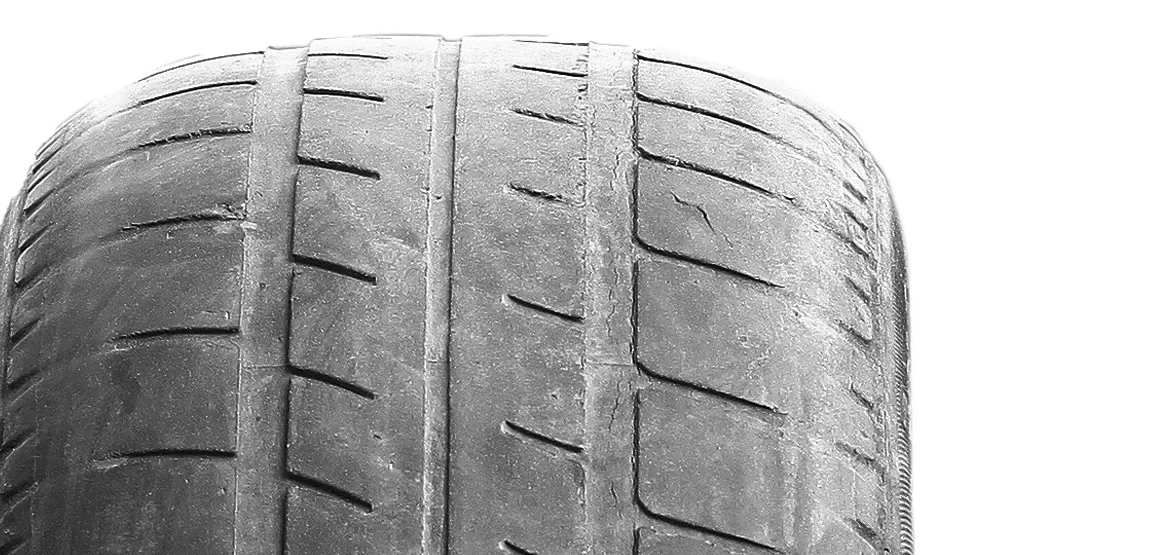
Diagonal or Patchy Wear
Usually, diagonal or patchy tread wear is due to a tire and wheel assembly that is out of balance. An assembly that is out of balance can also cause poor fuel and range economy, as well as vibrations in the steering wheel and floorboard. The professionals at Les Schwab offer balancing services to get you safely back on the road and prolong the life of your tires.
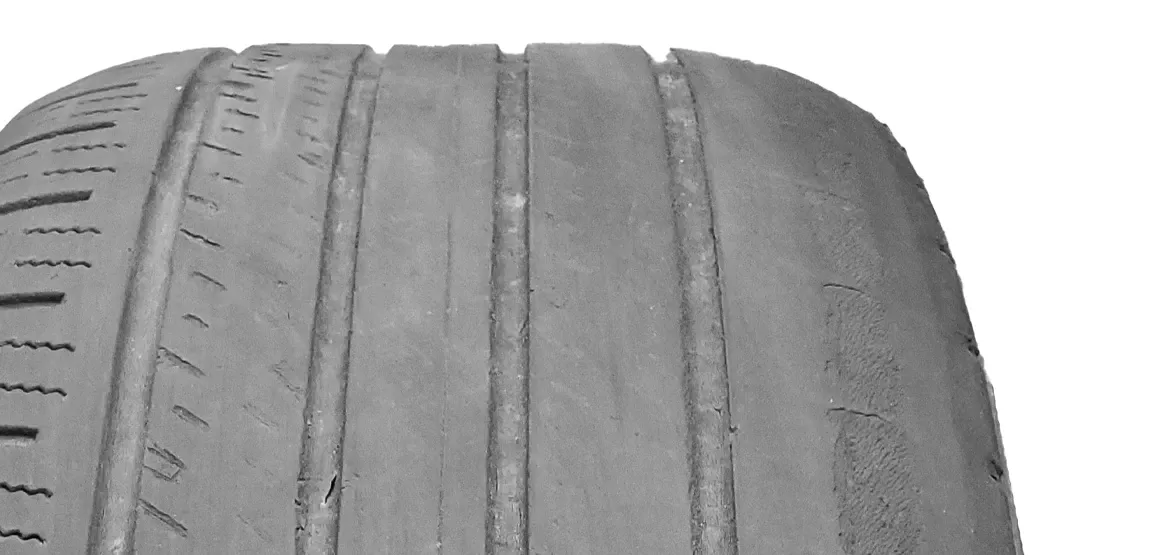
Feathering
If you notice moderate to severe edge wear on your tread, or the edges feel “fuzzy” in one direction, your vehicle may be out of alignment. That wear is called feathering. While the camber of your tire and wheel assemblies can affect wear and cornering, the likely culprit for feathering is the toe, which often falls out of alignment. Properly aligned, and not intentionally set at a negative or positive toe for performance or aesthetics, the total toe of each assembly should be at or near 0º.

Sidewall Bulge
Anytime you hit curbs and potholes, or if you have the wrong tires for offroad adventures, those tires can develop sidewall bulges. This is due to a break or rupture of the inner sidewall. Left unchecked, bulges can lead to tire failure.
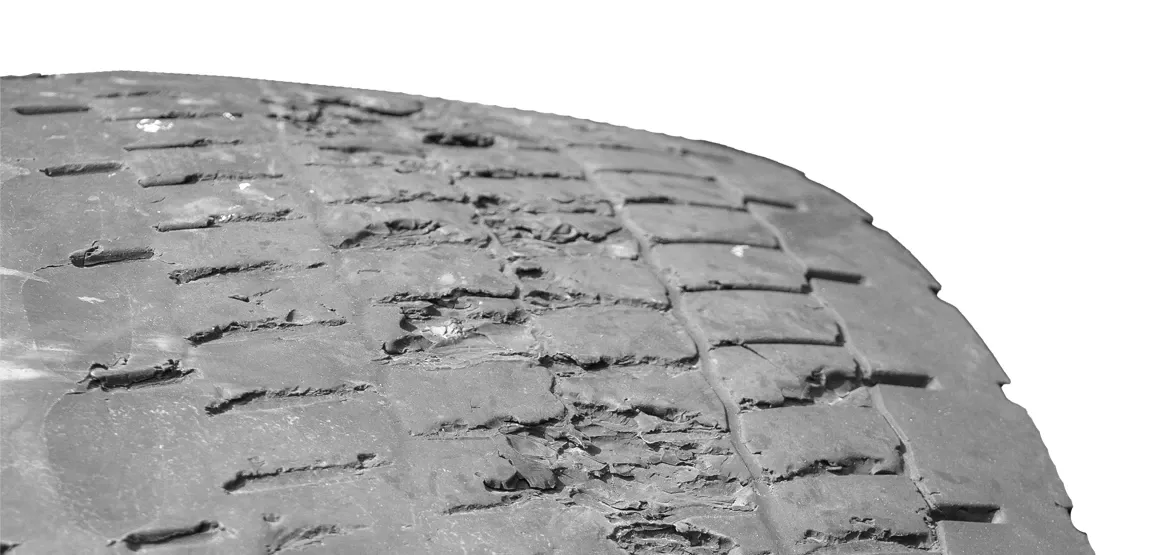
Tire Chunking
Chunking or pitting in the tread happens with frequent off-road use or driving on gravel roads. Other causes include underinflated tires, suspension and alignment issues, as well as overloading your car or truck. When chunks of your tire are missing, get to Les Schwab for a free visual tread inspection. Looking for tires designed for off-road adventures? Les Schwab carries what you need, including mud-terrain (MT) tires, and all-terrain (AT) tires.
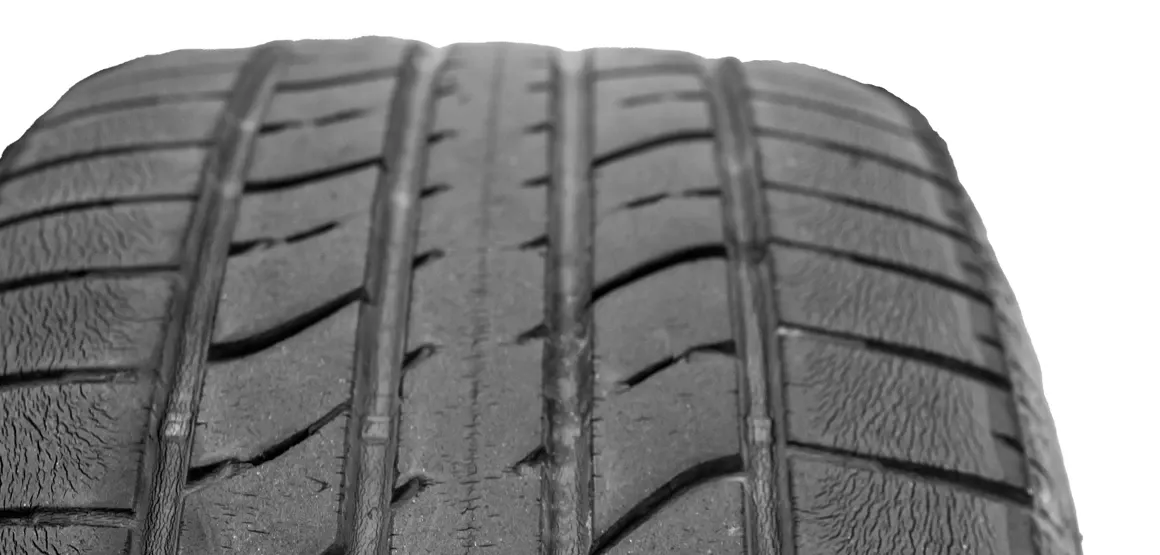
Cracked Rubber
Tires will wear down over time, even if you don’t drive much. Sunlight, heat, and chemicals used to melt snow and ice can reduce rubber flexibility, causing tires to crack, lose air, and eventually fail.
How to Check and Measure Tire Tread
To check and measure the tread on your tires, all you need are a flashlight and a penny.
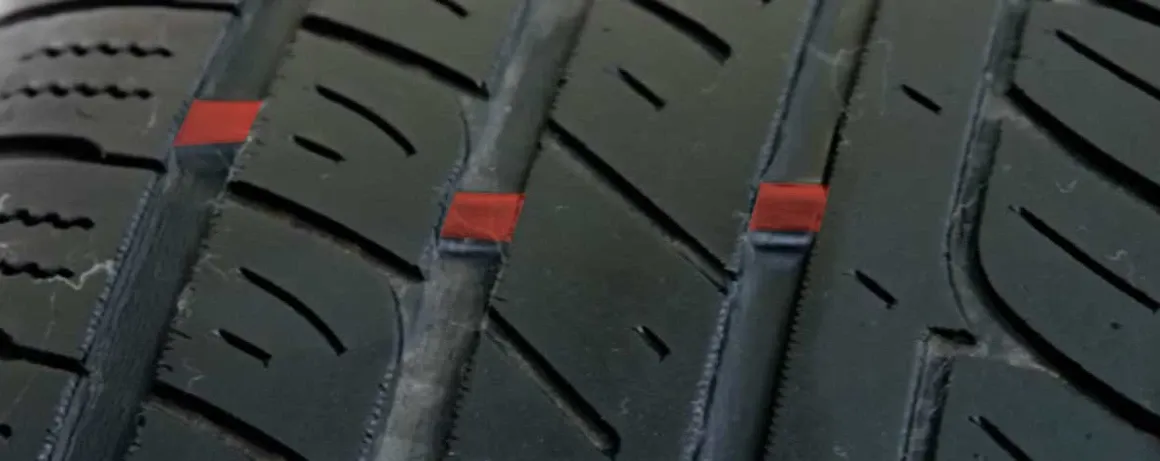
- First, look for the tread wear bars (a flashlight may help). These small, raised bits of rubber run between the tread blocks. As these bars become even with the top of the tread, it is likely time for new tires.
- Using a flashlight, look for smooth areas on the tread using a flashlight. If you notice one edge of the tire has less tread than the other, you could be experiencing a tread wear issue.
- Using a penny, measure the tread on your tires. Take a penny and place Lincoln’s head in one of the grooves of the tire tread. If you can see all of Lincoln’s head, it’s time to replace the tire.
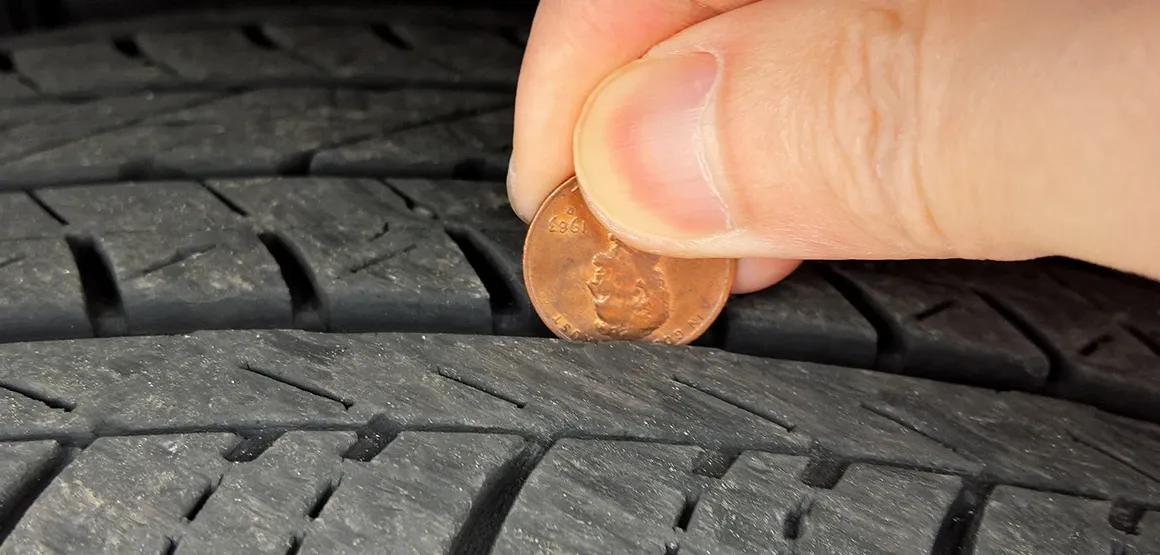
Tire Wear Patterns and Their Solutions Chart
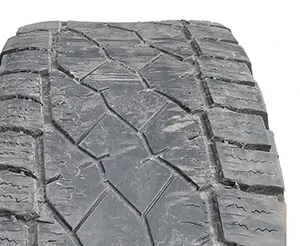
|
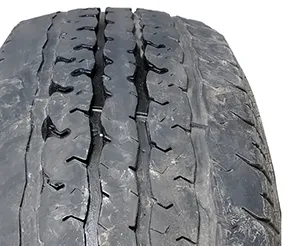
|
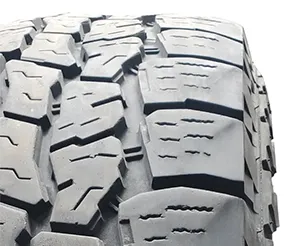
|

|
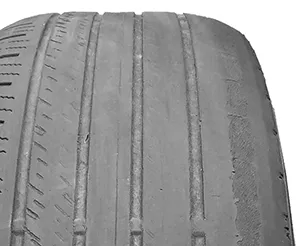
|

|

|
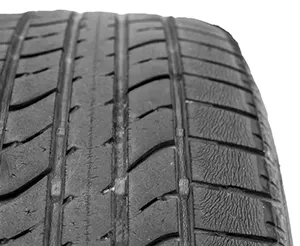
|
| Center Wear | Edge Wear | Cupping | Diagonal or Patchy Wear | Feathering | Sidewall Bulge | Tire Chunking | Cracked Rubber |
CAUSE: |
CAUSE: |
CAUSE: |
CAUSE: |
CAUSE: |
CAUSE: |
CAUSE: |
CAUSE: |
SOLUTION: |
SOLUTION: |
SOLUTION: |
SOLUTION: |
SOLUTION: |
SOLUTION: |
SOLUTION: |
SOLUTION: |

|

|

|

|
| Center Wear | Edge Wear | Cupping | Diagonal or Patchy Wear |
CAUSE: |
CAUSE: |
CAUSE: |
CAUSE: |
SOLUTION: |
SOLUTION: |
SOLUTION: |
SOLUTION: |

|

|

|

|
| Feathering | Sidewall Bulge | Tire Chunking | Cracked Rubber |
CAUSE: |
CAUSE: |
CAUSE: |
CAUSE: |
SOLUTION: |
SOLUTION: |
SOLUTION: |
SOLUTION: |
When to Seek Professional Help
Watch for uneven or unexpectedly quick tire wear, a decline in vehicle handling, performance, or ride, poor gas mileage or range, vibrations, reduced brake responsiveness, and a tire that’s losing air too quickly. If you spot any of those issues, stop by any Les Schwab for an honest, professional look at your tires.
How Les Schwab Ensures Safe and Long-Lasting Tires
Regularly checking the tread on your tires is a good way to spot issues before they become a problem. Those quick checks could add to your overall safety and control on the road. Stop by any Les Schwab for a free visual inspection of your tire tread, along with a look at your brakes, alignment, battery and more. At Les Schwab, we offer tire services to keep you rolling, along with America’s Best Tire Warranty.
What you need to know

Tire Tread and the Useful Penny Test
To choose the best tires for your vehicle, here’s what you need to know about tire tread.

Trailer and Tire Do’s and Don’ts: Answers to Common Questions
Towing a camper, a boat or a cargo trailer? Whatever’s attached to your hitch needs the same attention your vehicle gets. Here’s a quick FAQ.
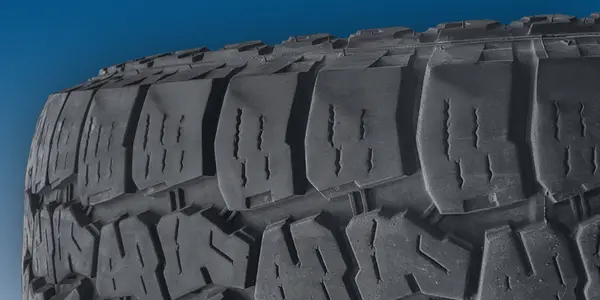
Tire Cupping: Causes, Warning Signs, and How to Prevent It
Tire cupping can affect your car’s performance and safety. Learn about the causes, warning signs, and how to prevent it with expert tips from Les Schwab.

